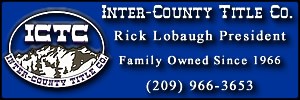 impacted local communities of Merced, Stanislaus, and San Joaquin counties.
impacted local communities of Merced, Stanislaus, and San Joaquin counties.The two hearings which have already taken place in Sacramento and Stockton were incredibly enlightening and have made clear to me, and I hope to you, that the proposal before you today is fundamentally incomplete and should not be considered a candidate for adoption.
At the prior hearings, you heard from stakeholders on entirely different sides of this debate raise the same point – any plan that focuses only on taking more water and ignores operational improvements, habitat restoration, and predator management will fail to achieve your stated goals.
Many comments have focused on the need to come up with creative solutions, and in fact, the chair and board members have made comments during the prior hearings in agreement that creative solutions are needed.
Despite a decade of work on this proposal, and what appears to be unanimous agreement from the public, the plan in print today is silent on nonflow measures and offers nothing in the way of creative solutions.
There also appears to be some confusion on behalf of the board whether or not you have the legal authority to consider nonflow options in your proposal.
Again, after 10 years of work, I would have hoped you had asked that question a long time ago.
You need to understand something about how this community perceives the Water Board.
You are the grim reaper.
Water is life in this region, and you appear to have no other purpose than to take that life away.
So you can understand our outrage when you announced a plan to double the amount of water you take from our community and create, what your own staff call, a permanent regulatory drought.
It is just beyond belief to me that you believe state law allows you to actually create a drought.
When we got a chance to read your report we learned that the authors have zero confidence in the models they used to determine benefits to fish and cannot tell us how many fish taking this amount of water will produce, although they did produce an estimate which they tried to hide in a graph which predicts an increase of just 1,104 salmon.
The report essentially ignores the existence of the Sustainable Groundwater Management Act to sidestep addressing the true impacts to groundwater and drinking water and finishes by low balling the negative economic consequences of taking this water from our region by hundreds of millions of dollars.
Riddled with omissions and errors as it is, the proposal in print fails to answer even the most basic questions.
It is no wonder we keep hearing about your preference for voluntary settlements.
If you truly prefer settlements as the Governor has instructed you to pursue, let me please offer some words of advice.
Acknowledge the inadequacy of the current proposal and do not move forward with it.
These public hearings have taught all of us a lot and there would be no shame in recognizing that in light of this new information, you need to go back to the drawing board.
Take an active role in settlement negotiations instead of kicking the can over to the Department of Fish and Wildlife to do it for you.
You are proposing this plan so you need to look us in the eye at the negotiating table.
Listen to, acknowledge, and actually incorporate into your plan the comments and issues raised by this community even when the answers are tough.
Do not refuse to address the hard questions like when you dodged answering how you will stop our schools from ending up on porta potties and bottled water when reduced surface water deliveries cause them to lose access to their groundwater.
Stop speaking about the fishing industry and environmentalism as if they are interchangeable terms.
Fisherman are out to make a living same as any dairyman or farmer.
They all deserve your attention and respect.
I am confident that if you follow this advice, you will find partners ready and willing to hammer out a settlement instead of ending up in court for years to come.
Assemblymember Adam C. Gray represents the 21st Assembly District which includes all of Merced County and portions of Stanislaus County.
Source: Assemblymember Adam C. Gray








